Facial wrinkles occur because people lose skin elasticity as they age, but there are also habits that can contribute to premature signs of aging. For example, forgoing sunscreen can cause sun damage, which leads to lines on the face. Repetitive motions, such as constantly squinting at the sun or sucking on a cigarette, can also make you more likely to develop wrinkles. In a recent article, The Inquisitr identified another potential cause of facial lines: water bottles.

Think before you drink
If you live in an area that has less-than-stellar tap water, drinking bottled water may seem like a no-brainer. There’s nothing wrong, nutritionally, with drinking H2O from a bottle, but the cosmetic dermatologist told the news source that it’s the repetitive motion that could cause lines to form around the mouth when they otherwise might not.
“We tell our patients, keep on drinking, it’s great for your body, it’s great for your health, it’s great for your skin,” a physician said in the interview. “Unfortunately, over time it either causes these lines or it aggravates them.”
Of course, there are ways to avoid this issue. Water purifiers may do the trick if you’d rather drink from the tap, and this will also save you money in the long run. You can pour your bottled water into a cup or drink through a straw, thus eliminating the lip-pursing motion.
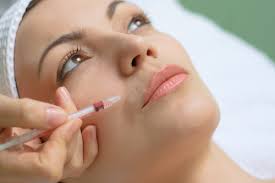
A cosmetic solution
Unfortunately, for those of us who have been drinking out of water bottles for years, this news may come a bit late in the game. If wrinkles have already formed, you can discuss other options with a plastic surgeon. Facelifts and deep chemical peels offer long-term results that can make you appear younger, while dermal fillers can help fill deep wrinkles and reshape the facial contours.
Retinol is considered the gold standard ingredient in anti-aging products because of it’s proven ability to stimulate and reproduce collagen in the skin. But knowing when and how to use retinol can be confusing.
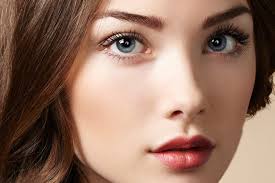
Why You Need a Daytime Retinol Now
The latest crop of retinol products don’t fight wrinkles and discoloration while you sleep — they do it during the day. Find out how to use retinol, and why you should
Things we love about retinols: They get rid of wrinkles, lighten dark spots, and zap zits better than just about any other skin care ingredient in existence.
Things we hate about retinols: the red, lizard-like skin you get for the first six to eight weeks when you’re using one; having to be maniacal about sunscreen; and only being able to use them at night.
We were downright giddy when we found out there are now daytime retinols (yes, you read correctly) on the market. And dermatologists are calling them a game changer. Throw out everything you thought you knew about how to use retinols. With these new products, you can get all of the benefits of every dermatologist’s favorite skin care ingredient, morning and night, without your skin peeling off your face.
The old:
Let’s talk about retinol. You’ve probably heard of it — in fact, you’re probably stocking some skincare products containing this potent ingredient in your medicine cabinet. So why isn’t everyone using it? And even more importantly, why does a product that promises and actually delivers smoother, brighter and younger looking skin while fighting acne have a semi-bad rap? Long before over-the-counter products were available, you had to purchase retinol in its strongest form: prescription strength Retin-A, a powerful and sometimes harsh treatment. But that was then, and unbelievable skin-changing OTC progress is now.
The new:
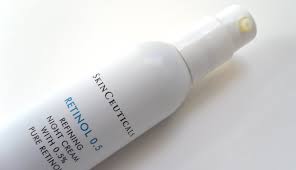
Unlike their predecessors, the new generation of retinol products can be used during the day, as their effects kick in gradually and aren’t as harsh on skin. You still get cell turnover, but it’s in a more controlled way. In addition, new retinols also come mixed with antioxidants, sunscreen and even moisturizers — making them much less irritating than they used to be. (Make sure you continue to be very cautious and diligent about applying SPF, even if you purchase a retinol cream with UV protection, as your skin will be more senstive as it becomes acclimated to the new product.)
Please contact our office for more information on why Retinol is very important: (817) 473-2120.
This information is brought to you courtesy of Dr. Mark Bishara and The Paragon Plastic Surgery & Med Spa
Lasers and light-based therapies– (for hair removal, anti-aging and skin rejuvenation) have nearly become everyday tools for people seeking smooth, blemish-free or simply more youthful-looking skin. The terms laser and light-based therapies are often used interchangeably, however, there are crucial differences in how the technologies work and what they effectively treat. Here’s a breakdown:
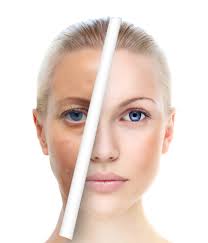
Lasers
The term laser is actually an acronym that stands for “light amplification by stimulated emissions of radiation.” Ablative lasers safely injure the skin at first, but eventually creates a healthy healing/wound response that results in collagen production. By delivering a deep, single wavelength of energy, these are often used to remove deep lines or scars and typically require one session. Nonablative lasers do not damage the skin, which is a plus, but may be less effective and require multiple sessions. These are used to correct skin concerns and remove tattoos and hair by targeting the dark pigments in the hair, which eventually leads the hair follicles to become inflamed and disabled, and voila! Smooth, hair-free skin after a few sessions. Lasers do, indeed, emit radiation-yet in tiny amounts that are deemed harmless.
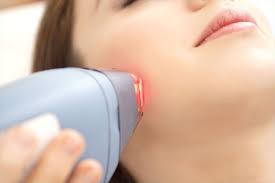
Light
Intense pulsed light (IPL) delivers a broader spectrum of light energy, unlike lasers’ single wavelength, and is a light source-not a laser. IPL is a strong, in-office treatment used for hair removal, discoloration, broken blood vessels and sun damage reversal. Another type of light therapy, light emitting diodes (LED) is a shallower, gentler treatment, ideal for collagen boosting and rejuvenating the skin. LED comes in a variety of colors, red for fighting acne, blue combat bacteria and yellow to reduce redness.
Dr. Bishara and The Paragon Plastic Surgery & Med Spa provide a wide range of cosmetic procedures to help patients look and feel their best. These procedures are designed to improve the appearance of the face and body through minimally invasive techniques that provide highly effective results. Many of these procedures can be combined in order to achieve your desired appearance. Please contact our office at (817) 473-2120 for more information or visit our website at www.MarkBisharaMD.com.

Hard to prevent and even harder to erase (for good), stretch marks, unfortunately, can be a lifelong problem. Although there are options available that reduce their appearance, a permanent cure still does not exist.
Stretch marks range in color from red (fresher, new marks) to white and silvery (older marks). They can feel indented or smooth on the skin. Whenever the skin is stretched out quickly, small tears in the dermis occur, causing stretch marks. They are basically microscars in the skin. To limit stretch marks from forming, keep the prone areas well-moisturized with a heavy hydrator like cocoa or shea butter, which will keep the skin pliable and more elastic. Keeping the skin hydrated and supple is key. Stretch marks can be exacerbated by the sun, which is why they should be safeguarded at all costs. While sunscreen is the go-to, you can also try a top or dress that’s embedded with UPF.
While some experts feel that in-office treatments, like lasers and skin tighteners, do little for stretch marks, others disagree. It is important to know that when treating them, the degree of improvement can range from minimal to moderate. If your stretch marks are red (due to the influx of blood vessels at the site), then a pulsed-dye laser may help; if they are white, a fractionated collagen-stimulating laser can offer some improvement. Lasers may help to lighten up any existing stretch marks, but they won’t get rid of them permanently since they will still exist to some degree. Think of using any type of laser for stretch marks almost like airbrushing—you’re ‘smudging’ away any of the sharp demarcations so that the marks are less noticeable on the skin. Excising any extra skin can also improve stretch marks since they are literally cut out or moved downward. If they are below the belly button and a tummy tuck (abdominoplasty) is performed, they can be cut out. If they are above the belly button and a tummy tuck is done, the stretch marks will now fall below the belly button and there will be less of them.
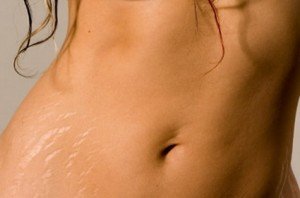
Do you suffer from stretch marks? There are many procedures that are designed to improve the appearance of stretch marks and provide highly effective results. Please contact our office at (817) 473-2120 for more information or visit our website at www.MarkBisharaMD.com. You can also visit us on our Facebook page at https://www.facebook.com/pages/Paragon-Plastic-Surgery-and-Medspa.
While sun damage doesn’t happen overnight, it can seem like it visibly affects the skin in a rather short period of time. The more the skin is exposed to the sun, the more the collagen and elastin in the deeper layers is broken down, giving less support to the underlying muscles and the skin’s surface. As a response mechanism, the skin tries to protect itself from the damage, in turn thickening as a means of regeneration.

Treat sun-damaged skin at home:
Peptides and vitamin A need to be used consistently to help strengthen the skin and improve its texture. Retinol is key since it sheds the top layer of skin and strengthens it from inside out. Use a Retinol regularly, because it keeps the skin in repair mode, creating new collagen and exfoliating the surface.
Free radical-fighting ingredients like green tea and vitamins C and E will help safeguard the skin from future damage.
Protection and maintenance are vital-once sun-damaged skin has been transformed, you don’t want it to regress. It is recommended to wear a sunscreen with ingredients that contain either physical or chemical blockers and broad-spectrum products, which provide protection from all UV rays. Also use antioxidants and a moisturizer.
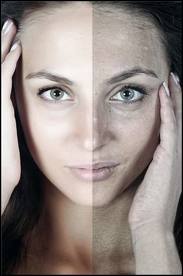
Treat sun-damaged skin professionally:
Laser and light-based treatments, like Intense Pulsed Light (IPL) and both ablative and nonablative resurfacing procedures, work to reinstate the skin. IPL can help eliminate brown and red spots on the face and body. A downtime-free treatment, although several sessions are required, IPL helps to rejuvenate the skin so that it looks younger and fresher.
Treatments that tackle sun-damaged skin, including chemical peels, can improve the skin, too. But, if not done properly, they can cause more harm than good. Acid-based peels buffer the skin, making it more sensitive to the sun.
Fractional lasers, like Fraxel, get rid of discoloration while improving the skin’s texture. Instead of employing light, fractional resurfacing lasers create microscopic wounds in the skin-as the skin heals, the sun-damaged areas scab and flake off, and collagen is purportedly increased.
Interval treatments will be needed over time, because nothing lasts forever- not even the results of lasers. Re-treatments every now and then will help maintain the longevity of your results for healthier skin. Please call our office at (817) 473-2120 for more information and questions on laser treatments and skin care. You can also visit our website at www.MarkBisharaMD.com. Dr. Bishara and The Paragon Med Spa provide a wide range of cosmetic procedures to help patients look and feel their best.



